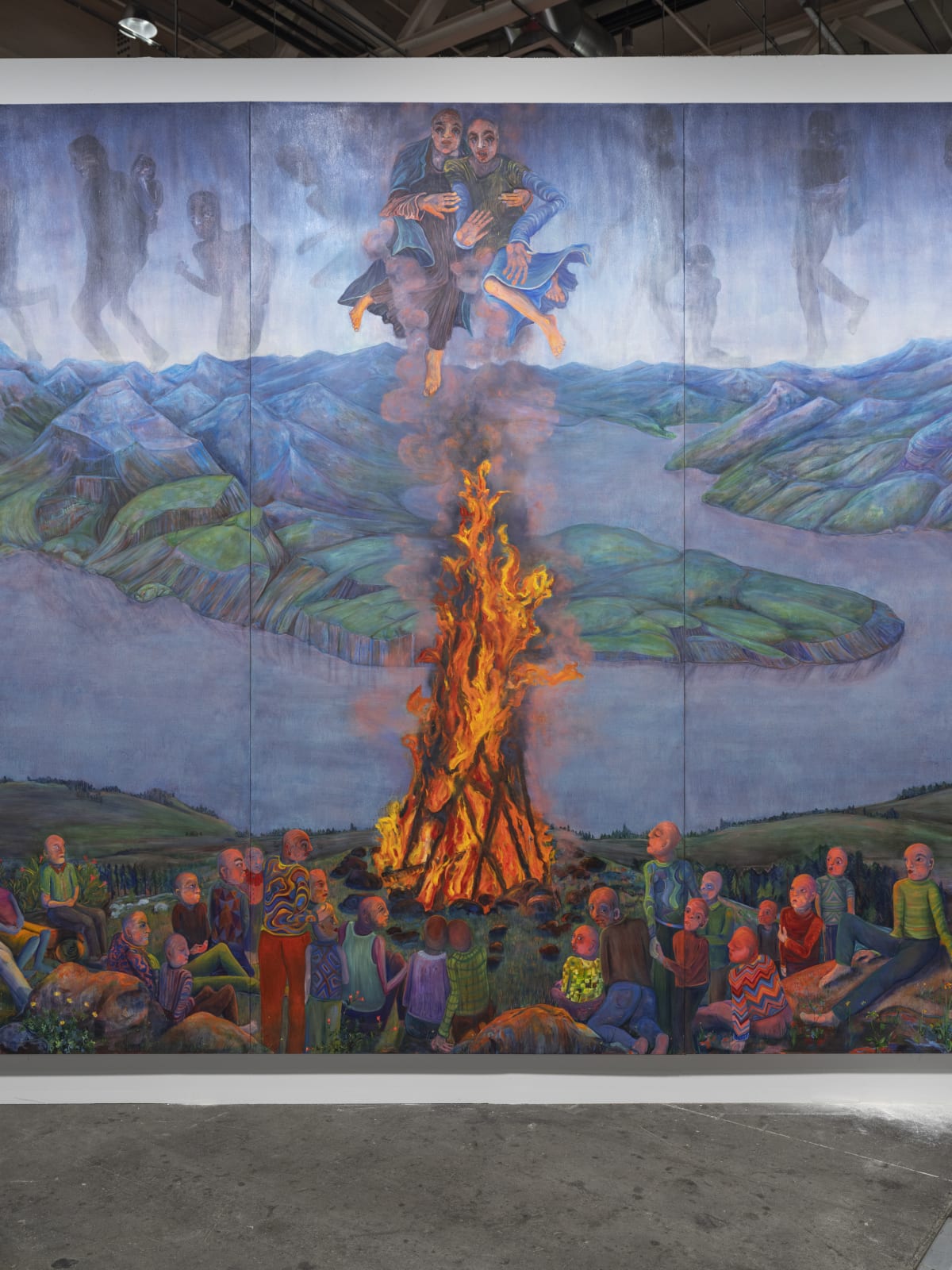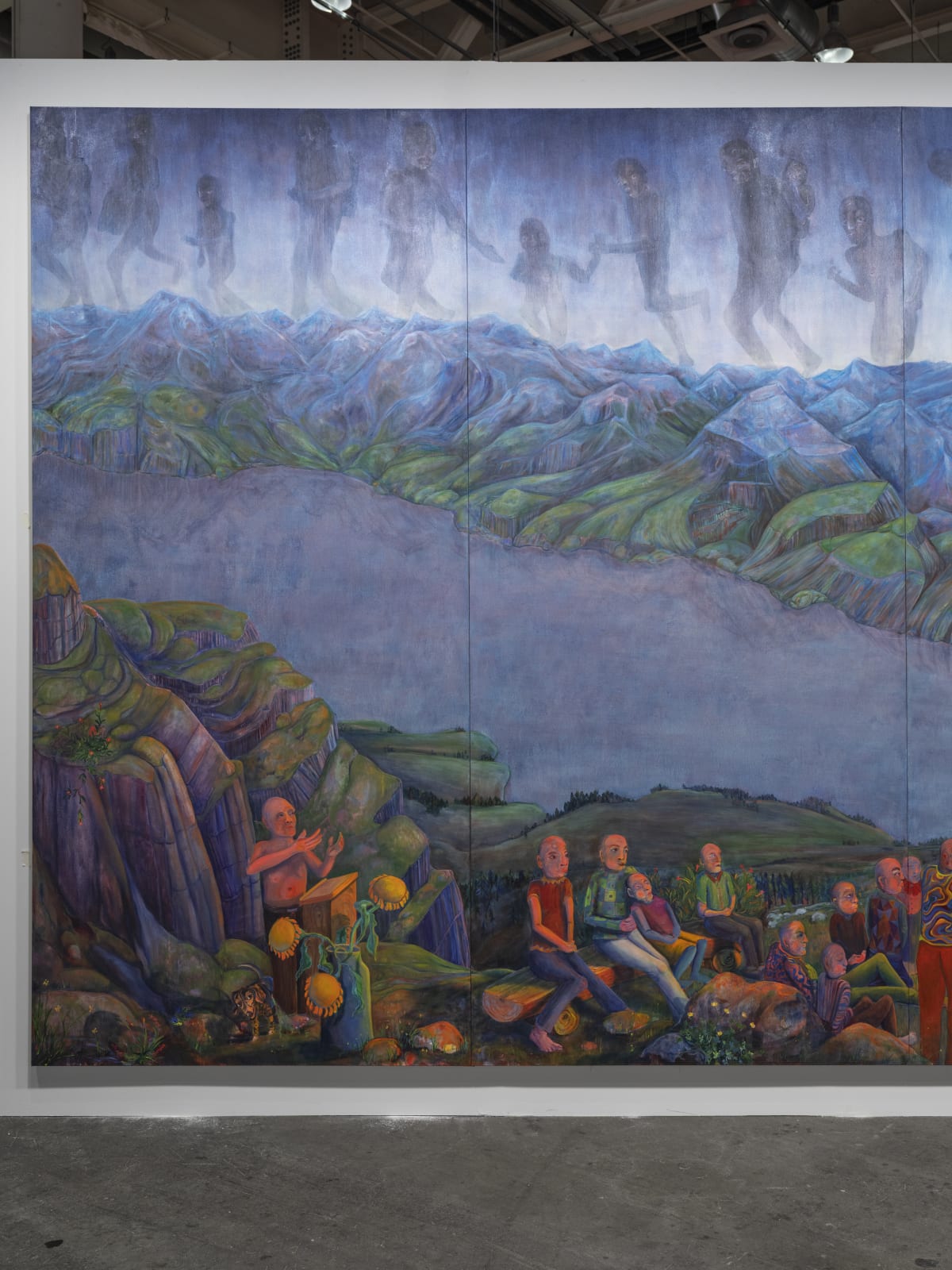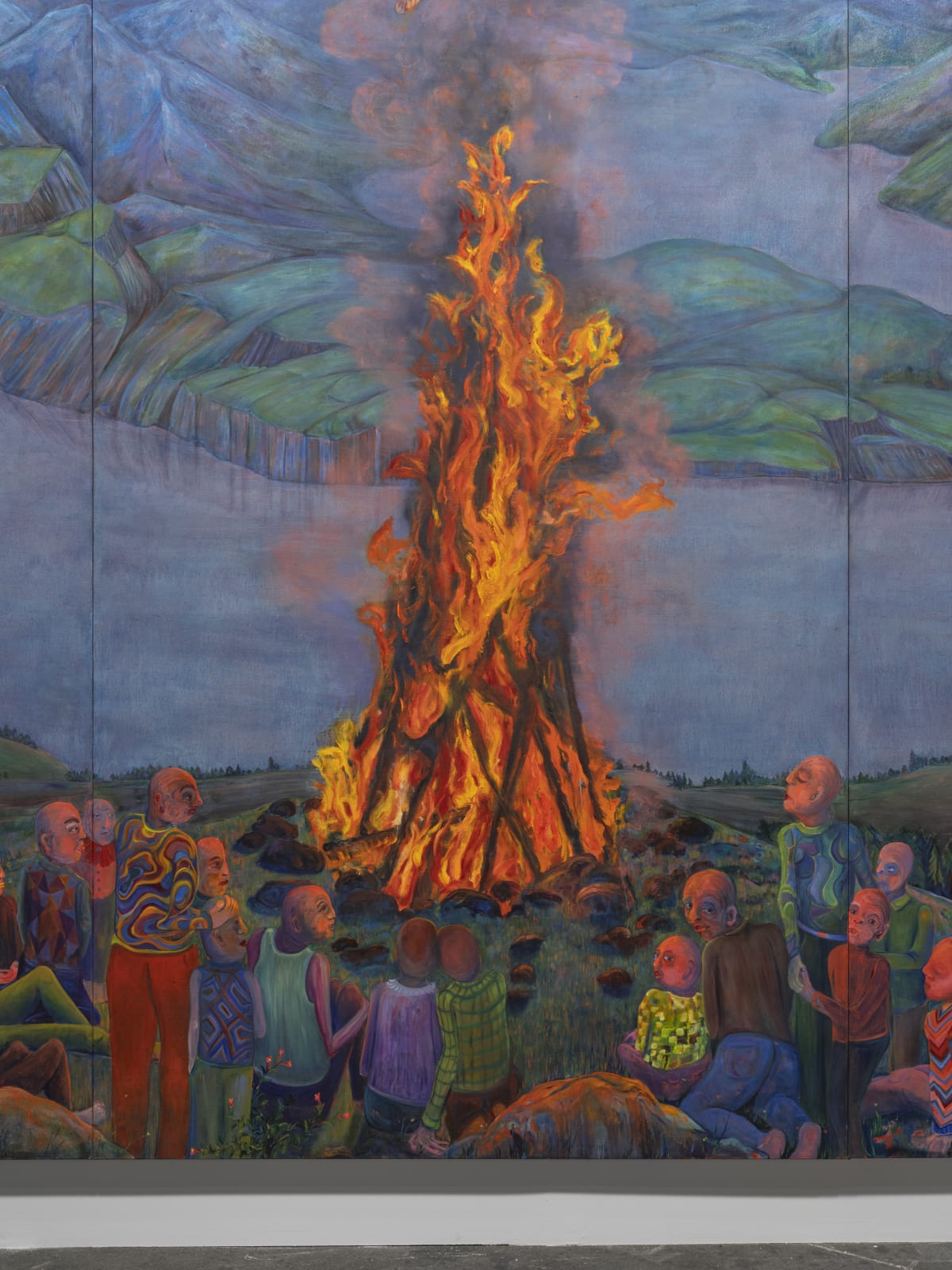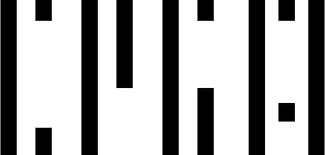Unlimited
Art Basel 2025
Basel, Switzerland
, 18 - 21 June 2025
Past gallery exhibitions exhibition
Overview
“Körper umkreisen Feuer (Bodies circling fire)" – A Contemporary Visual Epic
By Julian Denzler
As part of this year’s Art Basel Unlimited, Galerie Peter Kilchmann presents the painterly work of Andriu Deplazes (*1993, Zurich). "Körper umkreisen Feuer (Bodies circling fire)" (2025) is currently the largest painting by the Swiss artist based in Marseille. It consolidates elements from different phases of his oeuvre and can be described as a culmination of his previous work, given its thematic density. Deplazes’ position as a painter engaging with societal issues is especially evident in this work. For him, painting is not only a means of artistic expression but also a way to comment on current developments and create new visual approaches to complex themes.
The work depicts a scene in the Swiss Alps. In the foreground, a group of human figures surrounds a large fire placed centrally in the composition. As is typical for Deplazes, the heads are bold and androgynous. The group is framed by a proclaimer figure on the left and three military musicians on the right. In the mid-ground, a mountain panorama unfolds, offering views of numerous peaks and a lake reminiscent of Lake Lucerne. Shadowy figures flit over the peaks, hovering above the scene and lending it an unreal dimension. These elements simultaneously free the work from any naturalistic representation.
Deplazes references a motif that has preoccupied him since his solo exhibition at the Collezione Maramotti in Reggio Emilia, Italy, in 2023: the military marching band. Military music generally fulfills clear functions: strengthening group cohesion and fostering a positive atmosphere. The musicians serve a so-called higher purpose — in this case, representing the “sons of the state”, contributing to national identity.
The figure on the left, at a podium, gestures expressively. It appears to be delivering a speech, while at its feet, a small dog relieves itself. This scene recalls a notable scandal from 2004, when artist Thomas Hirschhorn, during his exhibition at the Centre Culturel Suisse in Paris, urinated on a photo of a right-wing Swiss politician.
The assembly of 27 figures in the center of the image gazes solemnly into the fire, either alone or in small groups. The scene creates an impression of a ritual and, in conjunction with the mountain landscape, evokes associations with August 1st — Swiss National Day – when people celebrate with bonfires all over the mountains. The depiction conveys a peaceful, cozy atmosphere. The flickering light of the fire bathes the heads of the figures in a warm, yet contrasting, glow. They are absorbed by the fire, drawn by its power. It seems to bring people together yet also leave them passively captivated. The metaphorical potential of fire here ranges from passionate enthusiasm to cleansing purification — even to punitive purgatory. The direction of the scene’s development remains uncertain.
Contrasting this contemplative serenity, the upper part of the image is bustling with movement. The figures are all in motion, migrating like a flowing stream over the peaks of the Alps. They are difficult to grasp—less individual and distinct than the figures around the fire. Together, they form a unified mass interrupted only by two larger figures in the middle, floating amidst the smoke of the fire. Deplazes draws inspiration from two crying terracotta sculptures by Niccolò dell’Arca, dating from the late 15th century and housed in the Basilica Santa Maria della Vita in Bologna. These figures, which Deplazes interprets as a combination of baroque angel motifs, look down from above on the scene — and, due to their size, also on viewers. They clearly function as commentators — but what are they lamenting?
The two female figures, along with the politician and the military musicians, frame the scene. They are the only characters actively engaged. Their arrangement echoes a Christian depiction of the Holy Trinity — with the Holy Spirit in the center, the politician as the “Father of the Nation,” and the three young musicians as his sons. This religious-moral dimension intertwines with the secular themes of the work. In this reading, the crowd in the center becomes a symbol of the populace, flanked by their leaders and entranced by the fire, passively mesmerized.
In an era when art increasingly distances itself from engagement with current societal issues, there is an even greater need for artists who counteract this trend with their work. Andriu Deplazes is such an artist, utilizing the means of art to vividly depict his view of the world and provoke thoughts on worldly topics. With powerful imagery and sensitivity, he guides us to the nerve centers of our time. In doing so, he consistently finds the narrow line between thematic concreteness and open accessibility. Deplazes’ paintings rarely offer answers; instead, they hold immense potential for new approaches to societal themes. Military music and flowers, frantic flight and passive endurance— all set against the imposing backdrop of the Swiss mountains. After a blow to the stomach, there is always a warm moment filled with strength, power, and beauty. Tense, simultaneous layers intertwine into a multilayered visual world that, full of both cruelty and beauty, sketches the paradoxes of 21st-century life from the perspective of Europe's privileged population.
Installation Views
Be the first to know updates about Galerie Peter Kilchmann
* denotes required fields
We will process the personal data you have supplied to communicate with you in accordance with our Privacy Policy. You can unsubscribe or change your preferences at any time by clicking the link in our emails.











